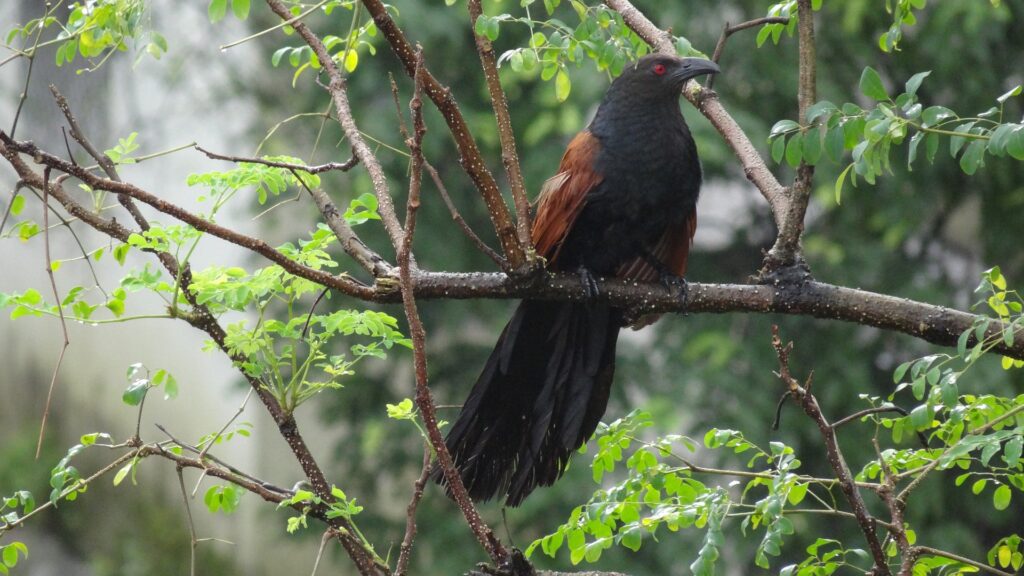The Greater Coucal looks like something in between a large crow and a pheasant. That’s why some people call them “crow-pheasants!” But the Greater Coucal is neither. It is, in fact, a member of the cuckoo family. Bright red eyes and dark feathers give the Greater Coucal a fierce appearance, so it’s no wonder this bird is often connected with omens.
The Greater Coucal is native to South Asia and found from the western portions of India to the southeastern corners of Indonesia. While much of the world isn’t familiar with these birds, in their home range they make an undeniably strong impression.
Related Article: Species Spotlight: The Wild Turkey
Fun Facts About the Greater Coucal
Bright red eyes, long tail feathers, and a rust-brown back are some of the Greater Coucal’s most recognizable features, but a striking appearance is not the only thing the Greater Coucal has to offer. Let’s look at some Greater Coucal fun facts!
Ground-dwellers: Greater Coucals might bear a passing resemblance to a high-flying bird of prey due to that sharp-looking decurved bill, but they’re actually ground-dwelling terrestrial birds. They aren’t incapable of flight, but they’re clumsy and weak in the air and spend more time on the ground foraging for food than they do on the wing.
Family ties: The Common Cuckoo is notorious for its cold and brutal parenting style. Common Cuckoos are brood parasites that lay their eggs in the nests of other birds where their large fast-developing chicks instinctively kick their foster siblings from the nest and demand their foster parents’ undivided attention. While the Greater Coucal belongs to the cuckoo family, its own family structure could not be more different. Greater Coucals are monogamous, for starters, and are known for their tender courtship rituals in which the male brings gifts to the female. Greater Coucals also split parenting tasks, with both males and females actively participating in rearing their young until they are old enough to move on.
Toxic tastes: Greater Coucals forage for a variety of foods, but the most famous aspect of the Greater Coucal’s diet is the most alarming one. Greater Coucals have been observed preying on venomous snakes, such as the deadly Banded Krait and the Saw-scaled Viper. This isn’t the only item on the Greater Coucal’s menu that might turn your stomach. They’re also known for eating toxic Oleander fruits.
Meat and medicine: The Greater Coucal has a strange history of being hunted by humans. In some parts of their range, they are associated with medicine and, for this reason, there is a tradition of consuming Greater Coucal meat as a supposed cure for various ailments. Oil from their meat is thought to be a cure-all capable of healing anything from a burn to a broken leg. According to a rather gruesome legend, if you break the leg of a Greater Coucal nestling, the adult will return to the nest with the exact blend of curative herbs required for healing. This has inspired a general connection between the Greater Coucal and healing medicines. Though some think it has healing properties, British colonists in India have a different association with Greater Coucal meat. British settlers expected the Greater Coucal to be a delicious gamebird on account of its resemblance to a pheasant. They were unpleasantly surprised to find the flesh to be “evil-tasting.”
The Future of the Greater Coucal
The International Union for Conservation of Nature’s Red List of Threatened Species considers the Greater Coucal to be of “Least Concern” globally. It also describes Greater Coucal populations as “stable.”
Popular Article: Species Spotlight: The Hermit Thrush

